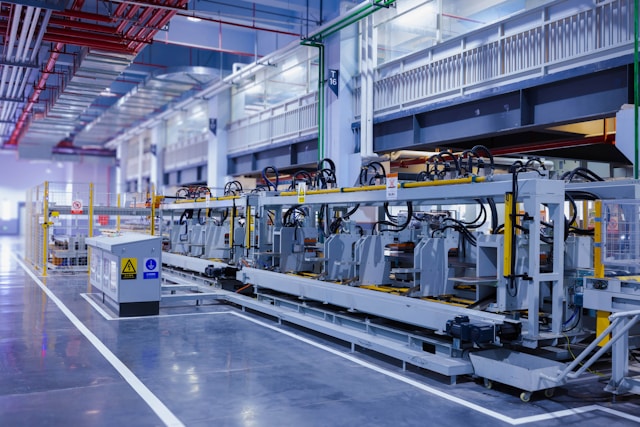Efficiency is crucial when you’re running a manufacturing plant. The aim is to keep machines running smoothly without unexpected failures. But how do you achieve that? One of the best ways to do that is to use manufacturing maintenance software to monitor performance, avoid downtime, and increase Overall Equipment Effectiveness (OEE). This software is an absolute game-changer for operations. Want to know why? Read on!
What Is OEE and Why Does it Matter?
Before we get into manufacturing maintenance software, here’s what you need to know about OEE in general. To put it simply, OEE measures the productivity of a manufacturing process. It’s a score considering three crucial issues: availability, performance, and quality. The closer to 100 the OEE percentage, the better the operation. And who wouldn’t prefer greater efficiency?
Today, computerized maintenance management software contributes significantly to this efficiency. It’s not only about repairing machines after they break but also about avoiding breakdowns, maintaining performance, and enhancing product quality. And what exactly in the software makes that happen? Let’s see.
The Power of Proactivity
One of the most notable functionalities of manufacturing maintenance software is predictive maintenance. This software doesn’t wait until equipment fails; it analyzes machine data to predict when it will likely break down. With help from sensors and live data, it knows about potential problems before they become problems.
This preemptive strategy has the potential to minimize downtime, while downtime, as you can imagine, has a direct correlation with OEE. Material can be produced much more efficiently when machines operate correctly without unscheduled stops.
Investigation for Rapid Response
Another great thing is real-time monitoring. Operators can see how the machines are holding up at a glance. The software flags if something is amiss, whether a slight decline in speed or temperature. This enables fast remedies before the damage is done.
This is necessary to quickly react to performance problems and maintain a high OEE score. After all, identifying minor issues early keeps them from becoming expensive-to-fix downtime later.
Work Order Management Ensures Sanity
Work order management keeps your maintenance team organized. When a machine requires attention, the software creates a work order, follows progress, and books follow-ups. This is a way to prioritize which maintenance task should be addressed first.
Efficient work order management also entails no more wasted time hunting for the next thing to do or understanding what needs to be done next. The maintenance crew stays engaged, which leads to reduced downtime and increased productivity.
Machine History and Analytics
The history of any piece of equipment is vital. Manufacturing maintenance software can report on each machine’s performance, maintenance history, and failure trends. This information can help you see trends and better understand what is working and what is not.
By looking at these statistics, you can decide whether an upgrade to the equipment is warranted or if there’s a need to replace it. In so doing, you can improve OEE. Consistently using this data creates a culture of continuous improvement.
Mobile Accessibility for Teams on the Move
Flexibility is the name of the game with today’s manufacturing. Mobile-enabled maintenance software allows team members to access work orders, machine data, and diagnostic tools while on the move. Either in the field or within the shop, they have all the information they need directly at their fingertips.
Such ease of use allows for quick issue resolution, connecting suppliers intelligently, and when necessary. This enhances the speed and accuracy of responses to ensure excellent predictive maintenance, eventually increasing OEE.
Spares Management
You usually need spare parts for maintenance. With this approach, your software comes with a solution that manages spares. You can easily track spares and see what parts are available. No more running around for parts or waiting for orders. This is good for keeping OEE numbers healthy since it speeds up repairs and minimizes downtime.
Integration With Other Systems
CMMS can be integrated with other systems you may already use, like your inventory management system. The real-time flow of information means you can see all parts of your operation, enabling smoother coordination between departments and better decision-making.
OEE improves when maintenance, production, and inventory data finally work in unison from one place.
Conclusion
The metric of Overall Equipment Efficiency (OEE) is essential in manufacturing. Manufacturing maintenance software provides many of the features you need to help you achieve it, including predictive maintenance, real-time monitoring, and work order management. The best part? With these tools, you can ensure your machines run at maximum capacity. Making this software a part of your daily operations will position your business to succeed in the long term.








